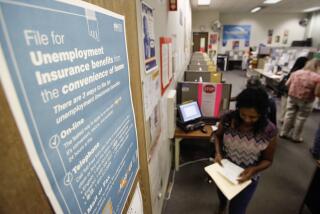Want a job? Trucking, nursing and customer service workers are in demand

Even though U.S. jobless claims have dropped as COVID-19 restrictions ease, still-high unemployment rates are likely to persist. But that’s not the case in every industry. High-demand jobs have far more openings than applicants, and they’re likely to stay that way for some time.
“We’re in a contradictory environment,” says Jim McCoy, senior vice president with ManpowerGroup, a multinational staffing company. “There’s high unemployment, but there’s high demand for some types of work.”
Driving, nursing and customer service positions are plentiful, he notes. Some of these high-demand positions require training and certifications, but the training often can be done in as little as a few months and, sometimes, while on the job. The rewards can be substantial.
“People who take the opportunity to upskill, with programs that are cheap or free, do themselves a huge favor,” McCoy says. “In the long run, learning new skills is going to increase your marketability and your pay.”
Trucking and delivery
The highest-demand job in the country is for truck drivers, particularly those who can handle heavy commercial vehicles and tractor-trailer rigs. Nearly 760,000 such trucking positions were open in December — nearly three times the openings for the second-most high-demand job, registered nurses.
Demand for drivers of light trucks and delivery vans is high, too. With more than 78,000 open positions, it ranked fourth on Manpower’s list of highest-demand positions in December.
Will the demand last? McCoy thinks so. E-commerce drives demand for trucking and delivery. And consumers are increasingly willing to pay a little extra for the convenience.
What do truckers earn? The average base salary is just over $62,000 a year, according to Indeed.com. However, pay can soar well into the six figures — $120,000 to $300,000 a year — for commercial drivers who take long-haul jobs and those who drive trucks that they own.
If you drive a big rig, move hazardous materials or transport more than a few passengers, you’ll need a commercial driver’s license. Technically, there’s no education requirement to get these licenses. But there are tests that require specific knowledge.
Some community colleges offer classes to get commercial licenses. Many trucking companies also subsidize this training for new hires. C.R. England, for example, puts new drivers into a $6,000 course and waives more than $4,000 of those fees for drivers who stay with the company for more than a year.
Commercial licenses are not required for driving vans and light delivery trucks for companies such as Amazon Flex, GoShare, CitizenShipper and Truxx. However, these positions require you to have your own vehicle, and they also usually pay less. The range is $18 to $66 per hour.
Nursing
Regardless of the COVID-19 pandemic, the aging of the massive baby boom generation nearly guarantees that nursing will be a high-demand job for decades. Nursing positions range from entry-level assistants to highly trained nurse practitioners. Demand for all levels of nurses is high, according to Manpower’s research.
Training requirements and salaries vary dramatically based on the type of nursing license you have. Entry-level nurse assistants can secure jobs with little more than a high school degree and a few science courses. However, more advanced nursing positions — registered nurses, nurse practitioners and nurse anesthesiologists — require significantly more education and training.
Of course, they also earn considerably more. Nursing assistants typically earn upward of $17 per hour. Registered nurses and nurse practitioners can command $100 or more per hour.
The pandemic has meant less in-hospital time for many nursing students. But Cal State student nurses are now jump-starting their careers with the vaccine rollout.
The best way to get into nursing may be to start at the assistant level and get the requisite education and training while on the job. This is a particularly attractive option when you work for one of the many healthcare companies, such as Kaiser Permanente, that subsidize higher-education costs for their staff.
Nearly every city has full-time nursing positions available, but there’s also a wide array of agencies that help nurses find part-time, flexible and traveling positions nationwide. Some good options: IntelyCare, ConnectRN and Trusted Health.
Customer service
It’s not sexy, but there’s plenty of demand for people willing and able to handle the phones. Better yet, these high-demand jobs are often remote, flexible and don’t require any education or certifications. These can be ideal jobs for people who need to move frequently: The positions are often as portable as you are.
Kelly Ann McKechnie has a degree in zoology, for instance. However, her husband is in the military, and they move every time he’s redeployed. Instead of constantly looking for new work, she signed on with Liveops, an online platform that provides customer service representatives for companies operating in 36 states. She does that work part time because she has also launched a coaching business for triathlons.
If you want full-time work, Manpower found nearly 63,000 job openings. Many of these jobs are remote and offer flexible schedules. Pay ranges from $14 to more than $20 per hour.
Kristof is the editor of SideHusl.com, an independent site that reviews hundreds of money-making opportunities in the gig economy.
More to Read
Inside the business of entertainment
The Wide Shot brings you news, analysis and insights on everything from streaming wars to production — and what it all means for the future.
You may occasionally receive promotional content from the Los Angeles Times.









